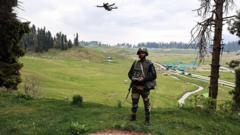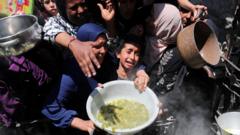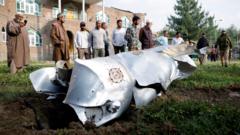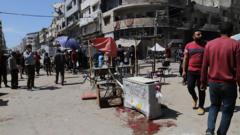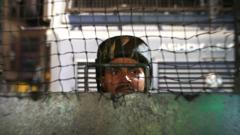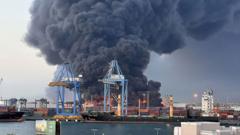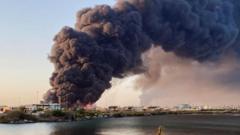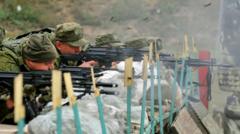Survivors face ongoing tremors and challenging conditions in their search for loved ones.
Myanmar, Thailand Hit by Devastating Earthquake and Aftershocks

Myanmar, Thailand Hit by Devastating Earthquake and Aftershocks
Over 1,500 confirmed deaths as rescue efforts intensify in affected regions.
On Friday, a catastrophic earthquake struck Myanmar and parts of Thailand, leading to an estimated 1,600 fatalities and thousands more injured. The heart of the disaster was felt most acutely in Mandalay, where emergency responders are racing against time to locate survivors amidst the rubble of collapsed buildings.
Volunteer rescuers, like Myo Zaw, have been navigating the devastating sites, employing sheer determination and their bare hands to sift through the debris. One significant rescue brought hope when a 12-year-old girl was pulled from the wreckage of her three-story home after she called out for help. However, this bittersweet moment was overshadowed by the grim reality faced by rescuers as they continued the search and unearthed multiple victims, including the girl’s mother and grandparents.
The intense heat in Mandalay, reaching nearly 100 degrees Fahrenheit, compounds the urgency of the rescue efforts. Concerns are rising as experts highlight that the crucial 72-hour window for finding survivors is swiftly closing. With tremendous pressure mounting, local and international aid organizations are springing into action, bracing for what may become one of the deadliest earthquakes in Myanmar’s history.
As the dust settles from the natural disaster, the ramifications stretch beyond the immediate loss of life. The ongoing military operations in various parts of the country continue to hamper relief efforts, creating an environment where many remain in peril not just from the earthquake, but from ongoing violence.
With resources being mobilized and communities rallying for support, Myanmar grapples not only with the tragic aftermath of the earthquake but also with the broader implications of a nation in crisis. Rescue teams persist in their efforts, holding onto hope in the face of a rapidly diminishing chance of survival for those still trapped beneath the rubble.
Volunteer rescuers, like Myo Zaw, have been navigating the devastating sites, employing sheer determination and their bare hands to sift through the debris. One significant rescue brought hope when a 12-year-old girl was pulled from the wreckage of her three-story home after she called out for help. However, this bittersweet moment was overshadowed by the grim reality faced by rescuers as they continued the search and unearthed multiple victims, including the girl’s mother and grandparents.
The intense heat in Mandalay, reaching nearly 100 degrees Fahrenheit, compounds the urgency of the rescue efforts. Concerns are rising as experts highlight that the crucial 72-hour window for finding survivors is swiftly closing. With tremendous pressure mounting, local and international aid organizations are springing into action, bracing for what may become one of the deadliest earthquakes in Myanmar’s history.
As the dust settles from the natural disaster, the ramifications stretch beyond the immediate loss of life. The ongoing military operations in various parts of the country continue to hamper relief efforts, creating an environment where many remain in peril not just from the earthquake, but from ongoing violence.
With resources being mobilized and communities rallying for support, Myanmar grapples not only with the tragic aftermath of the earthquake but also with the broader implications of a nation in crisis. Rescue teams persist in their efforts, holding onto hope in the face of a rapidly diminishing chance of survival for those still trapped beneath the rubble.

